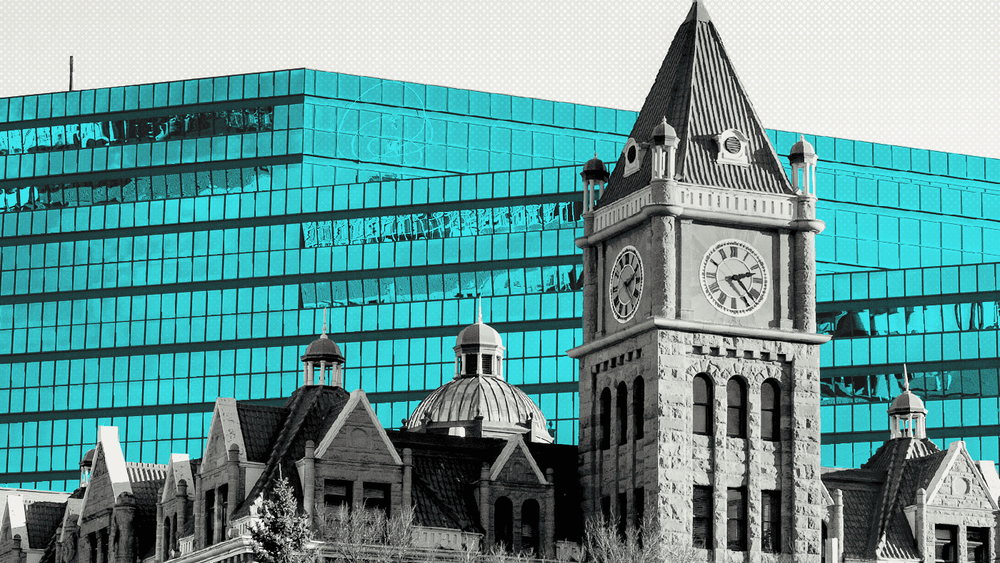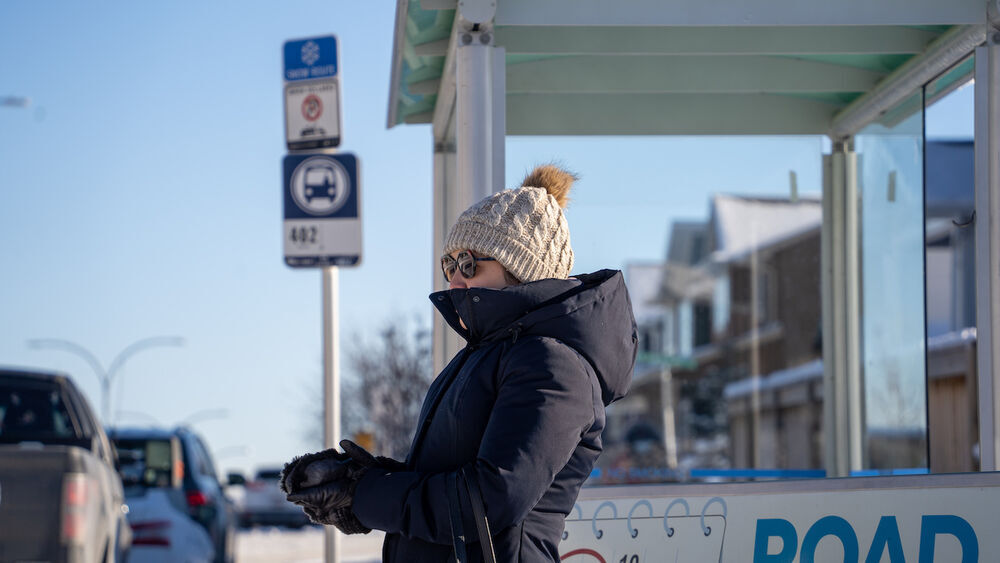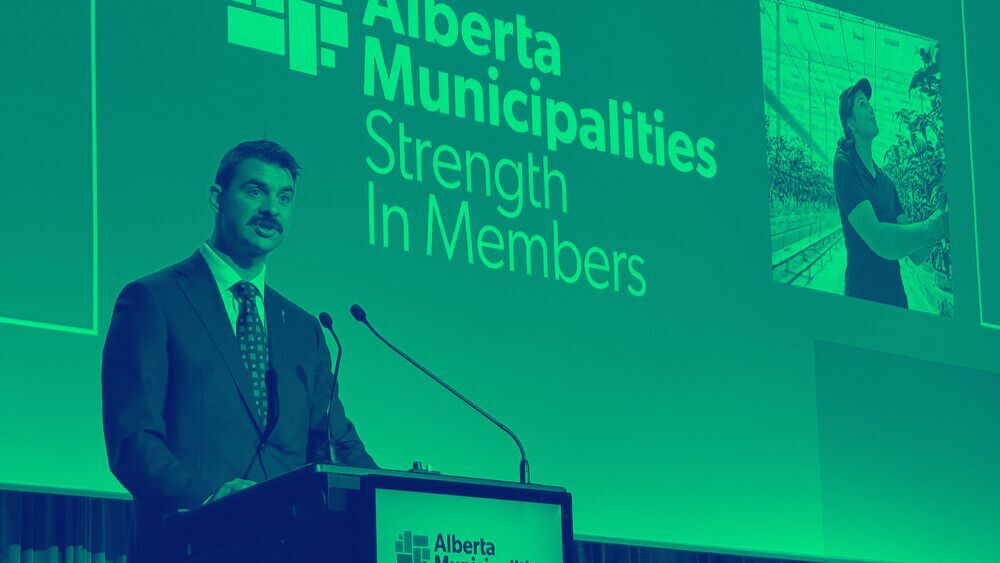
Evanston Middle School, under construction on Calgary's northern outskirts, is expected to be complete in 2026. Photo: Jeremy Klaszus
The UCP’s takeover of new school land
Calgary city hall has numerous concerns.
Support independent Calgary journalism!
Sign Me Up!The Sprawl connects Calgarians with their city through in-depth, curiosity-driven journalism. But we can't do it alone. If you value our work, support The Sprawl so we can keep digging into municipal issues in Calgary!
As Calgary prepares for an influx of much-needed new schools, will land for new public schools remain public or end up in private hands?
That’s what local politicians are asking after the Alberta government passed Bill 51 in mid-May. The bill empowers the province to remove property ownership of new schools from municipalities and school boards with 45 days notice.
“This change means that Alberta’s government would own new Kindergarten to Grade 12 school buildings and playgrounds and lease them back to school boards and charter schools,” Education Minister Demetrios Nicolaides said in April.
The legislation is part of the government’s larger push to own more public properties on which provincially-funded services, including hospitals, operate.
The minister — not the administrative barons — will now decide who gets school buildings. For independent education, this is a strategic victory.
Many school sites in Calgary are jointly owned by city hall and public school boards, particularly in new communities. Within the Calgary Board of Education, 140 school sites are jointly owned. The CBE owns another 123 and the city 27, according to the board. (These stats include vacant sites awaiting future schools.)
In new communities, school sites serve a dual function, not only as schools but also as neighbourhood playfields and “activity hubs.” City hall and school boards map out new school sites collaboratively under a joint use agreement.
City administration says Bill 51 threatens this hybrid function. “It reduces the ability for joint uses of school sites, since the province will be the owner of them,” city lawyer Hanna Oh told council’s infrastructure and planning committee May 14.
At the same meeting, councillors raised questions about privatization.
“The main concern from some of us is it’s a way to take land out of the public system and give it to private schools or do whatever else the province wishes to do with it,” Councillor Jasmine Mian said at committee. “We are already struggling to provide enough public lands for public use.”
Mayor Jyoti Gondek raised similar concerns in an interview. “What's the play?” she said. “Are we going to have more private schools? Are there going to be more charter schools? Because that's not what our joint use agreements were predicated on.”
Benji Smith, press secretary for Infrastructure Minister Martin Long, wrote in an email that Bill 51 “will not impact the public nature of educational programs” at schools.
The main concern from some of us is it’s a way to take land out of the public system and give it to private schools.
After a new school site is transferred to Alberta Infrastructure, the province must “offer a leasehold interest” in the property “to each board to which the approved new school project relates,” states Bill 51.
“The reasoning behind transferring property and land to [Alberta] Infrastructure is to centralize the ownership of school properties to improve resource management, transparency, and efficiency,” wrote Smith.
What is “public” and what is “private” when it comes to schools is not always obvious in Alberta. Introduced in the mid-’90s, charter schools are publicly funded and used to be capped at 15 schools provincewide. The UCP removed that cap in 2019 and is encouraging the creation of more charter schools.
Bill 51 also strikes the term “private schools” from the Education Act, replacing it with “independent schools.”
The advocacy group Parents for Choice in Education is celebrating the language change, along with the province’s new powers over school properties.
“This is more than housekeeping,” John Hilton-O’Brien, the group’s executive director, recently wrote in the Western Standard. “It attacks the ability of public school boards to starve their competition of facilities. The minister—not the administrative barons—will now decide who gets school buildings. For independent education, this is a strategic victory.”
The Alberta NDP criticizes the change for similar reasons.
“The legislation gives this government power to assign whatever school provider they want to any of these sites they own,” said NDP education critic Amanda Chapman, MLA for Calgary-Beddington. “We've seen this government talk a lot about… how they are considering options for other providers to take over hospitals. Well, the exact same thing can now happen in our schools.”
The reasoning behind transferring property and land to [Alberta] Infrastructure is to centralize the ownership of school properties.
When a new community is built, the Municipal Government Act (MGA) lets the city take up to 10% of land from the developer for green space and future schools. This is called reserve land. But if this land gets transferred to the province under Bill 51, the reserve designation can be removed.
This removes a constraint on selling. When the city wants to sell reserve land, it must hold and advertise a public hearing first, as required by the MGA. The province would face no such requirement, Oh said.
“Once it's no longer reserve land, the province can just take that designation off—then it can be used for anything,” said Oh.
Concern over Bill 51 has cut across the usual political lines on city council.
“I think it's critical for us to understand… what we could potentially lose as a municipality with this bill passing,” Councillor Sonya Sharp said at committee. “I think that there's intricacies here that they [the province] don't understand.”
I think it’s critical for us to understand… what we could potentially lose as a municipality with this bill passing.
For high school sites, the city usually needs to buy additional land from developers, drawing from a reserve fund. Revenue for the fund comes from industrial and commercial subdivisions, where developers pay cash in lieu of contributing municipal reserve land.
It’s unclear how much, if anything, the province will pay for new school sites. City hall and school boards are awaiting further details and regulations.
“The bill allows them to transfer to itself the land on which they will fund the school building and it does not specifically say that there will be any compensation,” Oh said at committee. “We would want at least fair market value and any money to go back into the reserve fund so that we can purchase more sites.”
“So the real question mark is: Are we going to get compensation? If so, what might it be?”
In response to these questions, Benji Smith, the infrastructure minister press secretary, wrote in an email that “when school jurisdictions or municipalities have incurred costs prior to the notice of transfer for surplus school land, the government is open to discussing compensation.”
“Where no additional costs have been incurred during that time, compensation isn’t provided.”
Jeremy Klaszus is founder and editor of The Sprawl.
Support independent Calgary journalism!
Sign Me Up!The Sprawl connects Calgarians with their city through in-depth, curiosity-driven journalism. But we can't do it alone. If you value our work, support The Sprawl so we can keep digging into municipal issues in Calgary!



